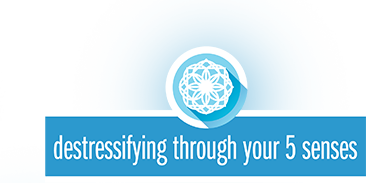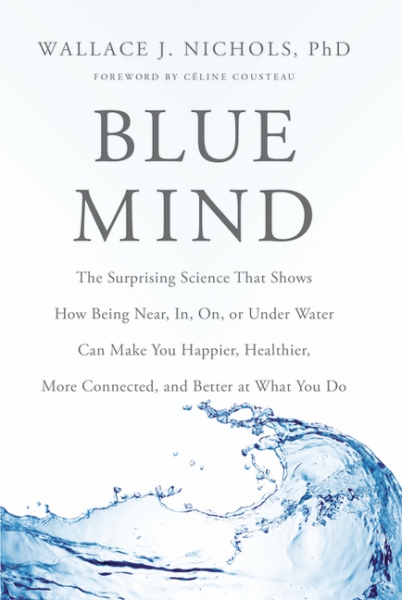I don’t think it’s realistic to say “don’t stress.” -- Chloe Kardashian
In-the-moment destressifying
You have all the tools you could ever need to live a self-actualized, stress-free life. No equipment is necessary. But sometimes, in the moment, we will succumb to our conditioned knee-jerk reactions that transcend someone else telling us not to stress. We need to get present really quickly or the stress hormones and panicky chemicals will have their way with us. We need to invoke present moment techniques like 16seconds, Reaching for SODA, and squeeze&release so we can pattern interrupt our reactivity and get to the other side of the moment.
You already know all the techniques; but because our stress is so personal, we can often benefit from helpful customized guidance to help you destressify when the moment strikes.
Destressifying Techniques Based on Your Personality
Depending on your personality, there is most likely a technique that feels right for you in a given moment to shift you from your conditioned response to your best version:
1. You’re a People Person Practice: Metta Meditation
This is a nourishing and healing meditation, and an example of putting the oxygen mask on yourself first before you rush to put it on someone else. But don’t worry… after you’re filled with oxygen, you get to flow it out to every corner of the galaxy! Try this over the holidays. You may even want to start your family dinner with everyone holding hands and doing this metta meditation. Everyone will feel the shift. Remember we transform the world by transforming ourselves… one heart at a time.
2. You Need To Get Calm RIGHT NOW! Practice: Alternate nostril or mindfulness meditation
You know that feeling you get when doing something you love? You’re so absorbed yet your mind is super clear? This mindfulness meditation can help invoke that feeling. Stop yourself for two minutes a day and bring your attention to your breath. Just follow your breath in your mind’s eye going in and out through your nose. The idea is that by staying with your breath, you’re not going to the past or future in your thoughts. If you’re extremely busy or a beginning meditator, this method works really well because it’s quick and you can do it anywhere. It’s also beneficial for combating stress and anxiety in the moment. To take it deeper, practice alternate nostril breathing.
3. You’re a Foodie, or Have Food Issues Practice: Sensory Meditation
A form of sensory meditation is mindful eating. Choose a piece of chocolate or truffle—and focus on the flavors and experience of eating it, savoring every bite, and connecting to the moment, without any other distractions like television, work, or other people. Simply place the piece of chocolate in your mouth, close your eyes, and for five minutes just allow the chocolate to dissolve. Don’t bite or chew it… just let it slowly dissolve. Connect to the changes and nuances in flavor, texture, and sensation. Just allow each moment to unfold and stay fully present with the process. If you struggle with emotional eating or weight concerns, or just haven’t been taking the time to notice what you’re putting in your body, this is a great tool for gaining more awareness, becoming mindful of your eating, and bringing more joy to the experience.
You’re A Perfectionist Practice: Heart Breathing
Instead of searching for the things that didn’t work out that you need to fix, place your hand on your heart, and say “peace, harmony, laughter, and love” to yourself. Do this for five minutes repeating the words slowly. They’ll become positive affirmations, and are meant to help allow you to experience self-compassion, reminding you to not take everything so seriously, and perhaps even celebrate your accomplishments.
5. You Need To Let Go, Shake It Off, and Have Fun More Practice: 8 destressifications of the spine as you blast your favorite song & sing along.
This doesn’t have to be a serious meditation, you can hum under your breath for the first few destressifications, and then bust it out when your arms are raised. Make it fun!
Destressifying Techniques for On the Go
- In the TSA line – 16seconds as you drift your attention to the soles of your feet and feel your bare feet connecting with the floor; slowly and methodically put all of your jewelry, watch, phone, belt, shoes, etc. into the same bin; take your time; keep going through several rounds of 16seconds until you have collected all your belongings; breathe and smile.
- Waiting at the gate – as soon as you sit down do a few rounds of 8 destressifications of the spine; make a phone call; and then reach out to someone you love and text them to let them know you are thinking about them; then practice a relaxed destressifying body scan.
- Walking on the plane – start with 16seconds; then practice reaching for S.O.D.A.; as you stow you carry-on; as soon as you sit down, do 8 destressifications of the spine.
- Taking off – heart breathing – version 2 and alternate nostril breathing; this is the perfect time to practice a destressifying body scan. Remember: if there are any areas of your body that feel tight, constricted, or painful, breathe deeply into them until they release.
- While flying – meditate during the flight for a few minutes here and there – use any technique you’ve gotten comfortable with; drink lots of water; set your watch to the current time as you cross time zones; do a few rounds of squeeze&release; and every 30 minutes do the 8 destressifications of the spine.
- Getting ready for landing – focus on the seat back directly in front of your eyes and lock into a trance of quiet continuous breathing.
- As it rings – Upon seeing an anxiety-producing number or name appear on your phone, begin reaching for SODA.
- Starting the conversation – 16seconds; as the conversation winds down do a mini-metta meditation and send them unconditional loving-kindness.
Integrating destressifying Techniques into Your Day
The goal is not simply to live our lives in bliss (although that would be nice) – but to cultivate our ability to connect to present-moment awareness and then come into the next moment with greater awareness, calm, clarity, creativity, intuition, and fulfillment.
Intellectually, we understand the scientific benefits of introducing a pattern interrupt into our non-stop flow of thoughts, words, and actions. And once you lock in a daily practice of meditation, the results will effortlessly circulate through your life. But if we can integrate in-the-moment destressifying techniques throughout the course of our day, we will diffuse potential stressors as they unfold.
In the morning at home: ideally you’ve already completed your first meditation of the day using RPM. Creating stillness as the starting point for your next 24 hours sets a powerful trajectory. But the unknown stress can lurk right around the corner. As soon as you feel stressed, implement any of these ten steps to bring you back into the moment:
- Spend five minutes holding your child, your lover, your pet, or yourself… which will instantly ease your blood pressure.
- Take a 10-minute walk connecting to nature to ease anxiety and replace it with calm. Leave your phone home and don’t plug in any music. Just drink in everything you see, hear, touch, and smell as you walk at a leisurely pace.
- Practice 15-minutes of yoga or stretching. Start with 5 minutes of deep alternate nostril breathing. Then gently move through a classic sun salutation flow to awaken your energy, release tension and rejuvenate your body. And then lay on your back with your eyes closed for 5 minutes.
At work: Ideally you are walking into the workplace with stillness and silence already flowing through you. But as soon as you notice frustration, irritation, or intensity starting to build, take these steps:
- Upon feeling the spark of your emotional tell, Reach for SODA. Stop, Observe, Detach, and Awaken to the best version of yourself.
- Pour some lavender or sandalwood-based oil or lotion gently into your open hand. Massage your palm with your thumb, then massage each finger from the base to the tip, and then the webbed area between your thumb and index finger.
- Step away from your desk and go outside or to an unoccupied place where you can sit. Close your eyes and breathe in and out deeply through your nostrils ten times to lower your heart rate and reduce your blood pressure.
- Take 3 minutes and chew a piece of gum to loosen the stress in your jaw. While you chew, roll your neck around to ease out any tightness.
After work, you’re carrying the past 12 hours of the day inside every cell in your body. So either as the very last thing you do before you head home or the very first thing you do when you come home, take time to release the day:
- Shake the tension right out of your body. Roll your shoulders backward and forward. Reach your arms to the sky and stretch and elongate your whole body from your toes to the tips of your fingers, then do a few arm circles. If you’re feeling sprightly, finish off with ten jumping jacks
- Shake the tension out of your mind with recapitulation. Spend five minutes playing your day in fast forward from the moment you woke up – don’t linger for more than one second on each activity or event that unfolded throughout the day – don’t harp on the drama or the words. Just keep playing your day at high speed like you were holding down the fast forward button on your remote.
- After dinner, SLOW down. Light a candle, brew some tea, take a bath, or nibble on some chocolate.
These ten steps can keep your body and your mind on a steady destressifying regimen; and if you can commit to them, fewer crises will arise in your day-to-day.




